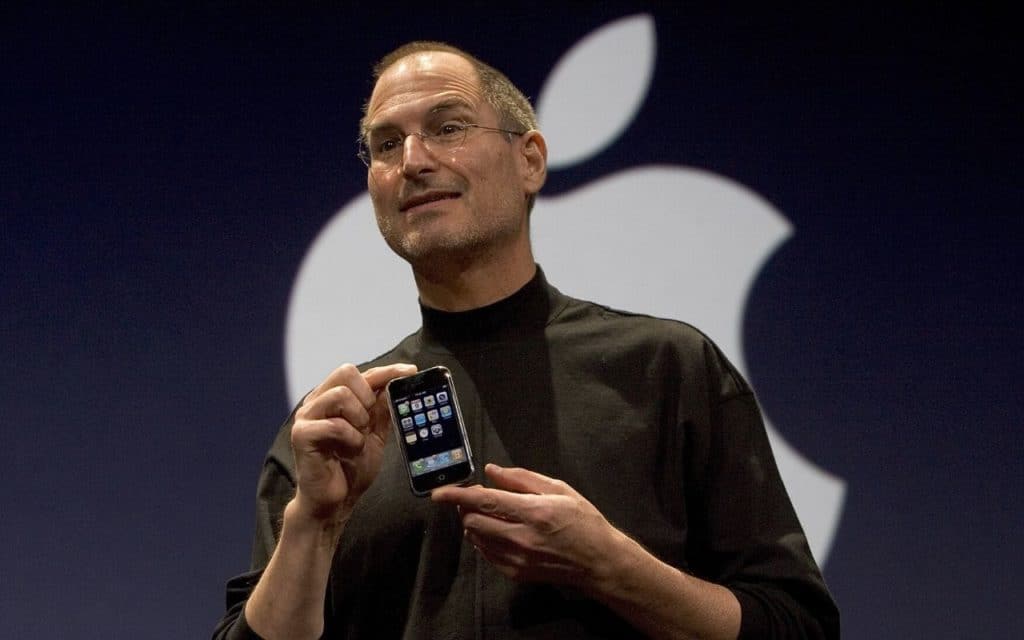
Ever since its launch in 2007, the iPhone has changed the whole world. It changed how we interact with phones, use apps and services in our everyday lives, capture photos, and even the way we work. Today marks the thirteenth anniversary of the unveiling of Apple’s first smartphone.
Steve Jobs unveiled the iPhone for the first time on the 9th of January 2007, and his keynote was particularly impressive. The then CEO of Apple put forward an idea of a device that combined a revolutionary mobile phone, a widescreen iPod with touch controls, and an internet communicator. He also made jokes about how most people had envisioned the company’s first smartphone. When he first unveiled the iPhone on the stage, everyone was awed by its features, revolutionary design, and simplicity.
Here’s the video of Steve Jobs unveiling the iPhone for the first time during Macworld 2007.
https://youtu.be/e7EfxMOElBE
The first iPhone (also called as iPhone 2G) was not the first touchscreen mobile phone in the world or the one with the highest-resolution camera, but it was still a breakaway success. And it was all because of the software and user experience. A few features such as an accelerometer, proximity sensor, screen auto-rotate, the pinch-to-zoom interface, and the desktop-class web browser made the iPhone seem like it was from the future when compared to existing smartphones from BlackBerry, HTC, Nokia and Palm.
After the launch of the iPhone, Apple released consecutive hits, year after year. In 2008, the iPhone maker introduced its first 3G smartphone. In 2009, it added an autofocus camera and video recording with the launch of the iPhone 3GS. 2010 was a big year for Apple as it launched the iPhone 4 with an amazing design, its first in-house processor, and a Retina Display. The iPhone 4S brought a faster processor, Siri, and iCloud.
The next year, Apple increased the screen size to four inches, added 4G, and the revolutionary Lightning connector. The iPhone 5s, which was launched in 2013, brought the first-ever 64-bit processor in smartphones and an easy-to-use fingerprint reader. In 2014, Apple introduced two iPhones, one with a larger screen and a camera with OIS. 2015 was the year the Cupertino-based brand added 3D Touch and 4K video recording to iPhones.
Dual cameras, waterproofing, and stereo speakers were introduced with the iPhone 7 series, and the company removed the 3.5mm headphone jack from its phones. In 2017, Apple introduced its 10th-generation smartphone, the iPhone X, which brought a completely new design, a bezel-less OLED screen, Face ID, wireless charging, and fast charging. In 2018, Apple introduced a larger iPhone as well as a more affordable iPhone. Last year, it focussed on the cameras, with the iPhone 11 series, bringing a triple-camera setup and Night Mode.
So what’s next for this year’s iPhones? It is being rumored that Apple will shift to completely notch-less screen design, an under-display fingerprint reader, 5G connectivity, and 3D ToF cameras on the rear for better portrait images and AR apps.
Our Take
The iPhone has had a massively positive effect on the whole smartphone market and history will never be complete without it. Apple’s vision changed the whole world and how smartphones have become a part of our daily lives. It has changed the way we browse the internet, capture memories, listen to music, play mobile games, use apps and cloud services, and watch videos on the go.
Whole new industries have developed around iPhones, be it the development of apps and games, music, or accessories. The way we use these things would never have been the same without the iPhone.
What do you think about the effect of the iPhone on our lives? Which was your first iPhone? Let us know in the comments section below.
